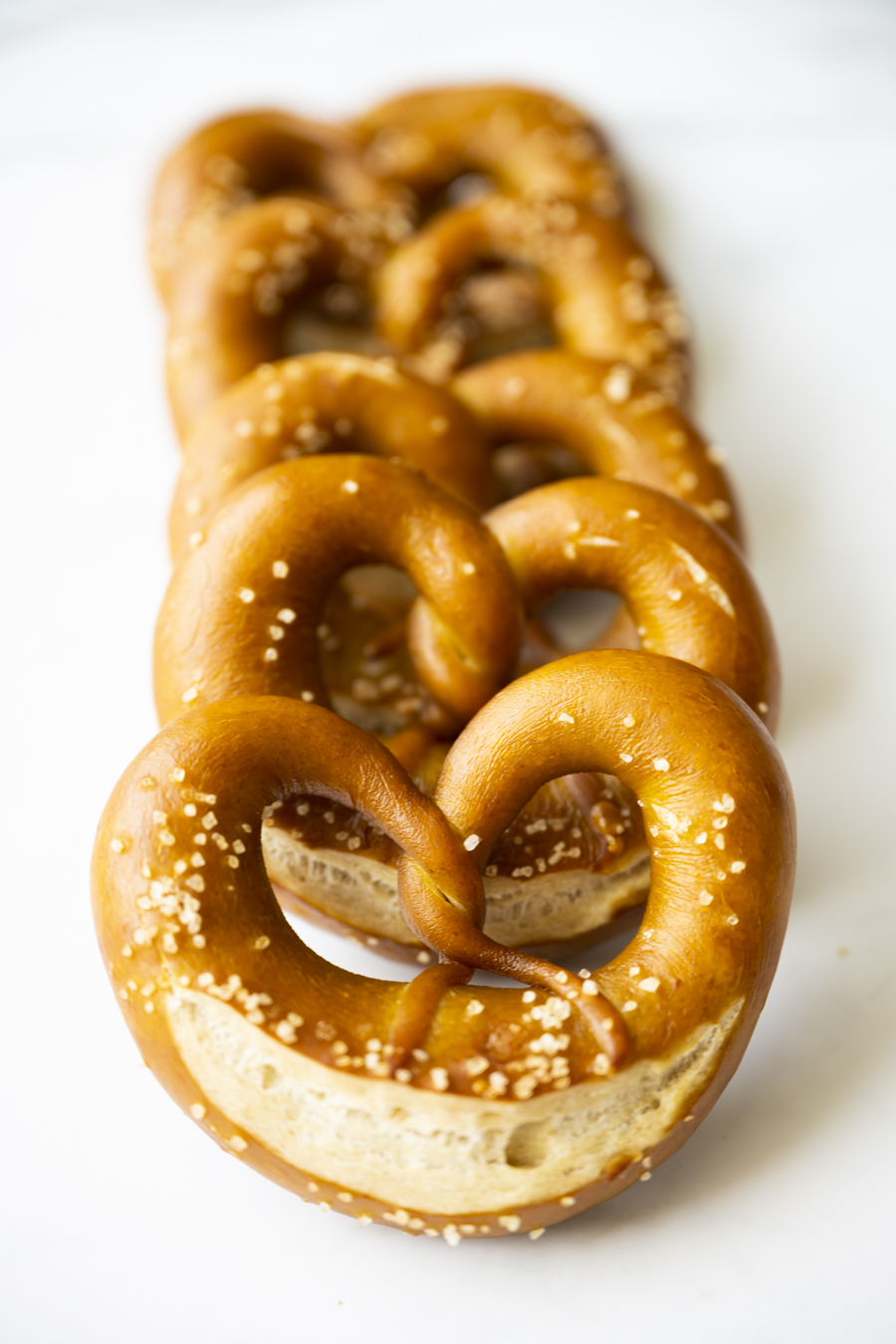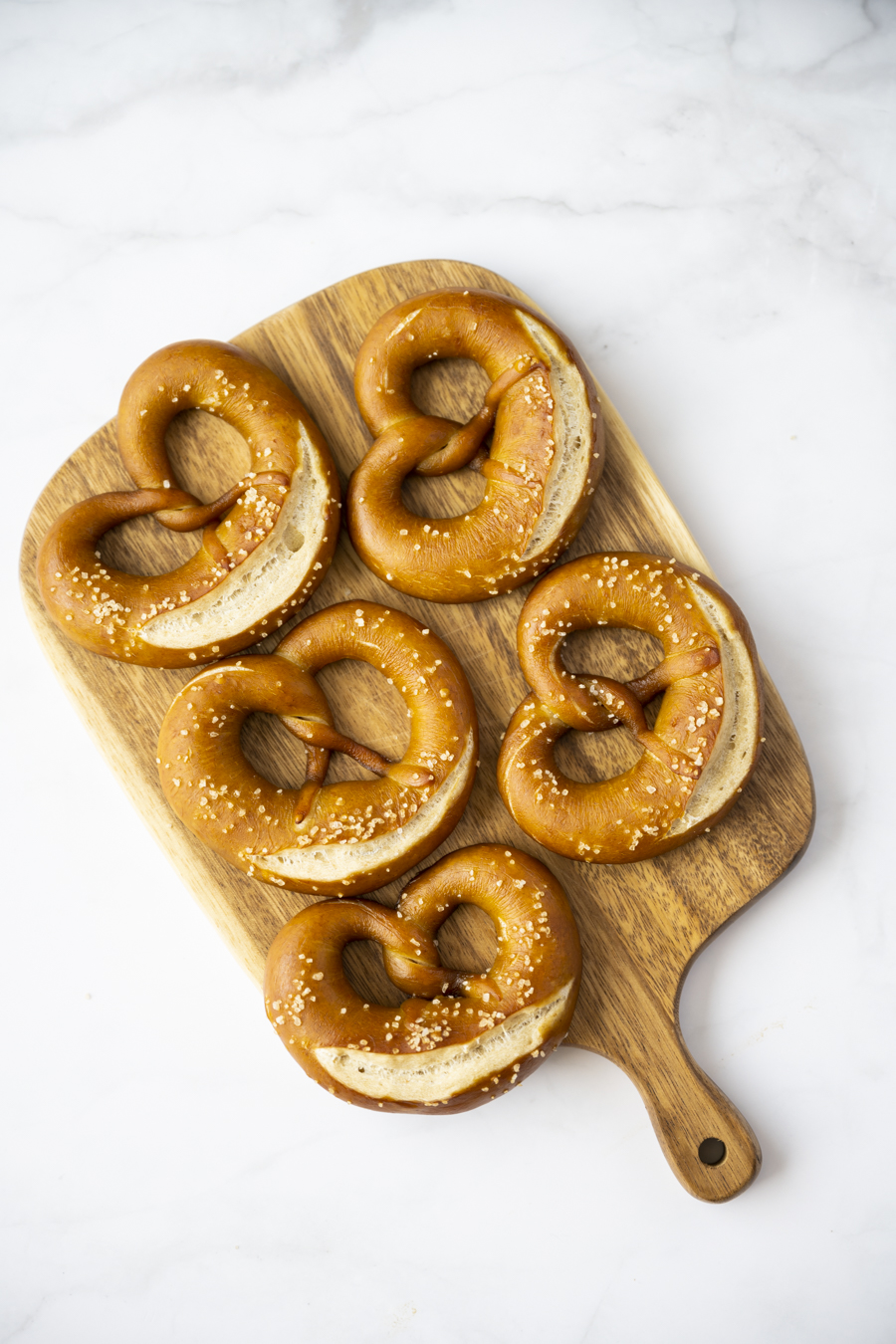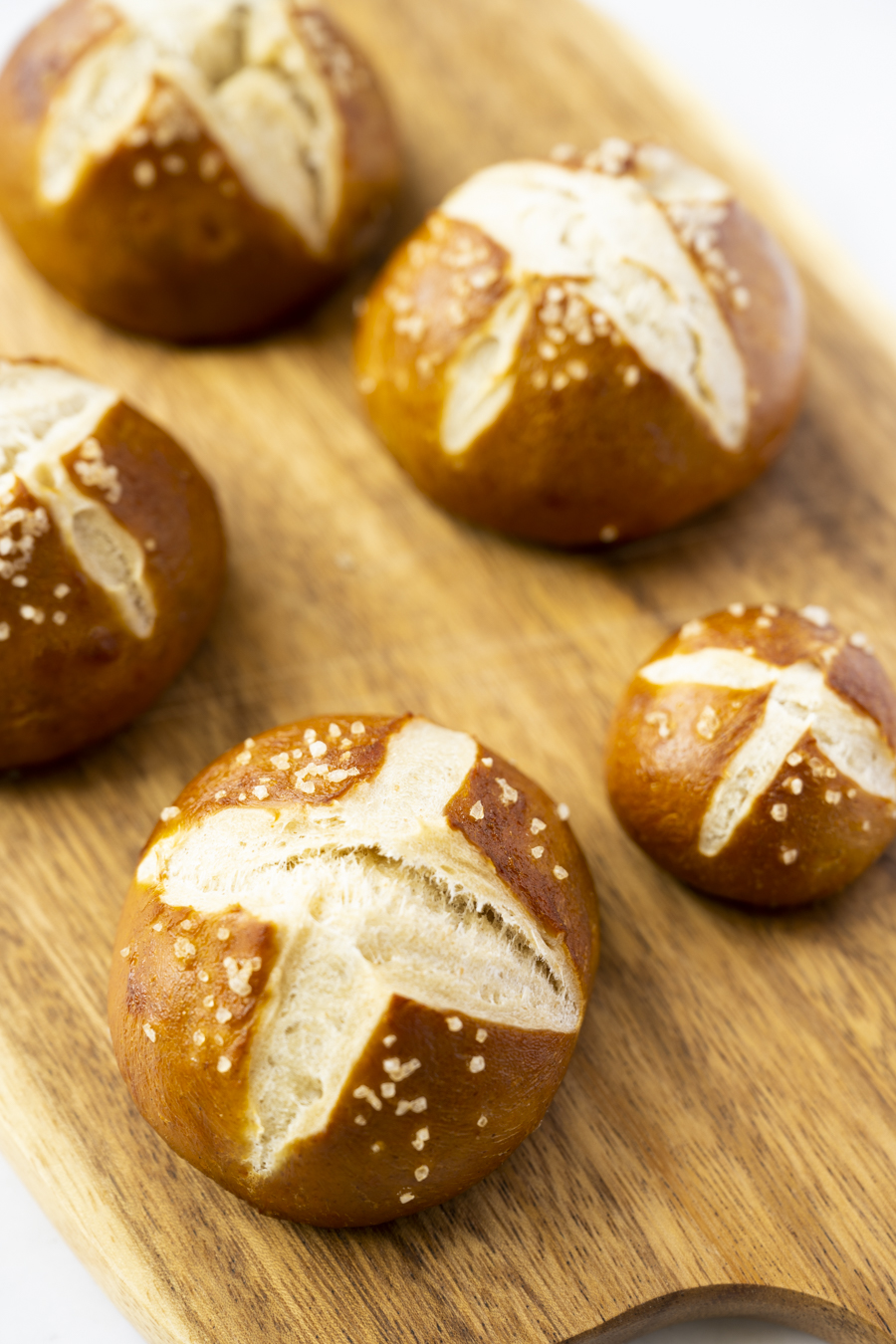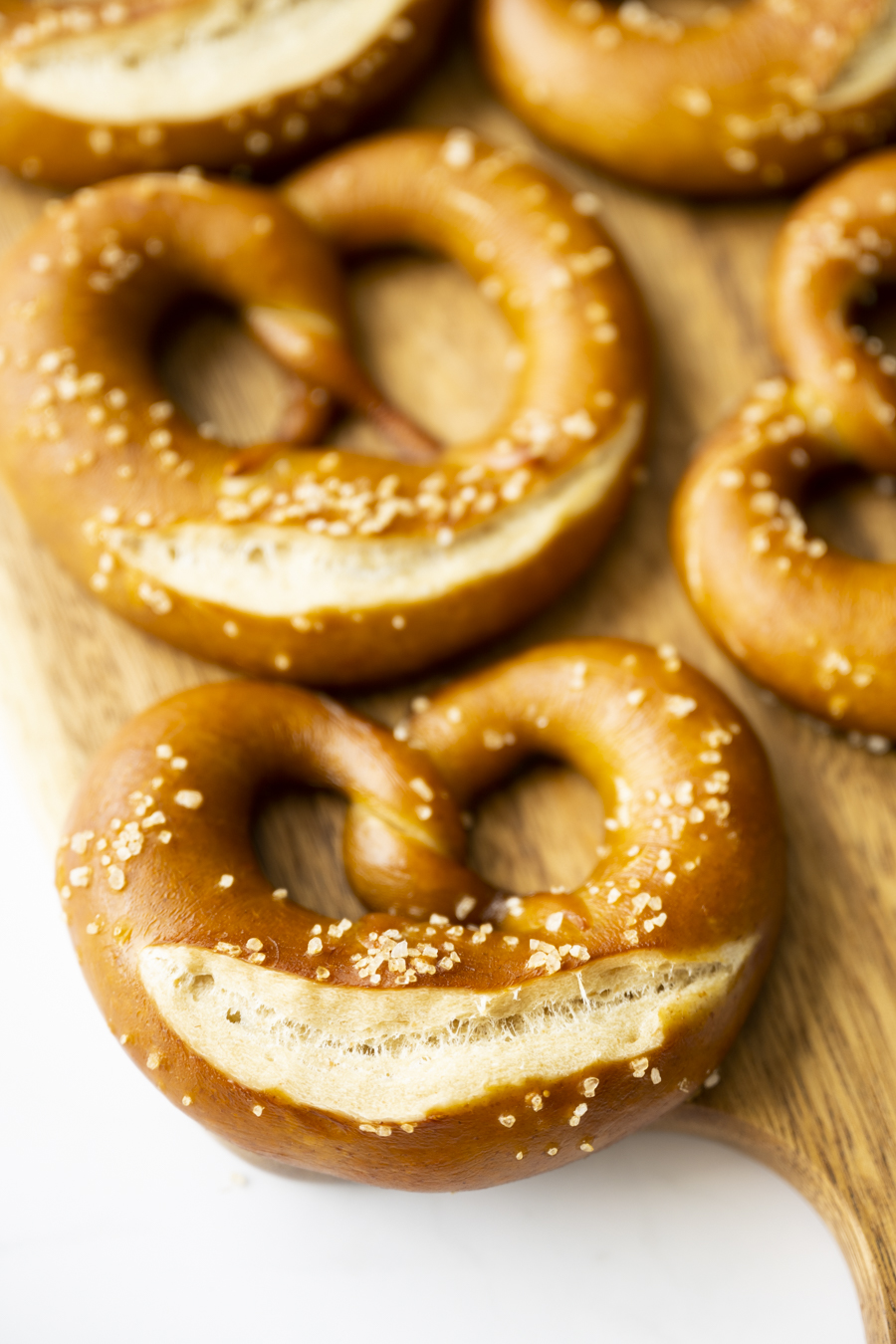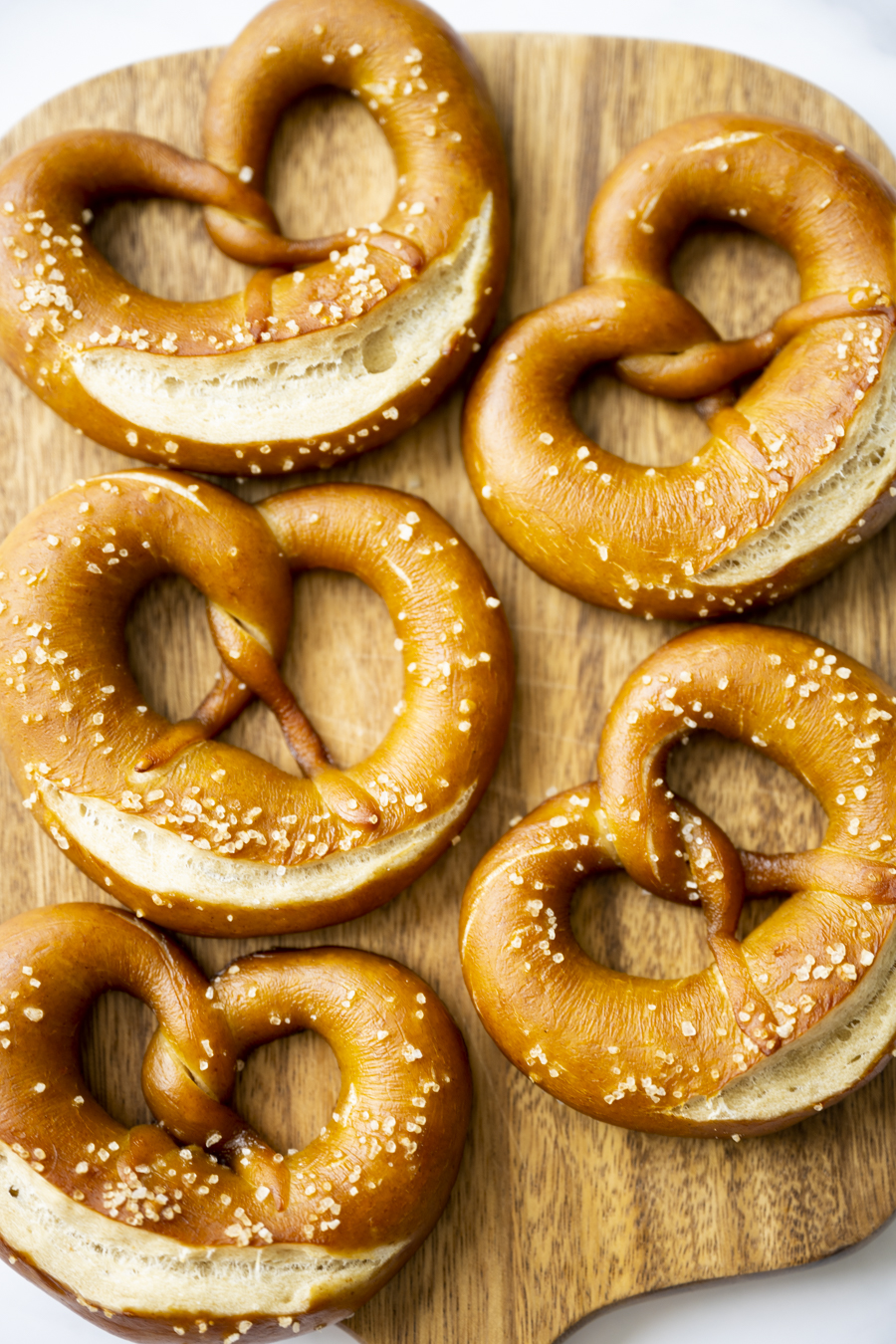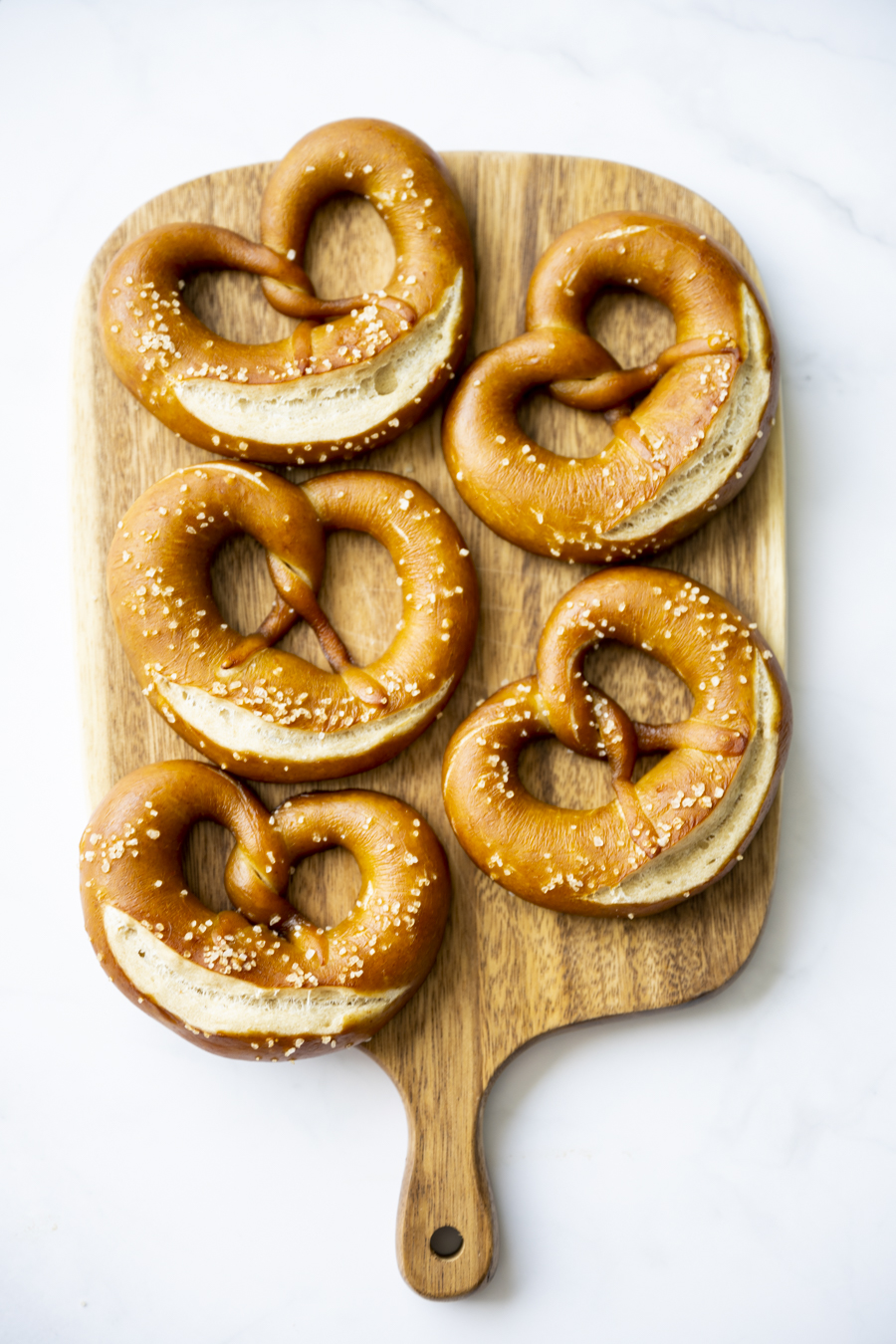This is my favourite recipe for sourdough pretzels and lye rolls. Their taste transports me back to Germany straight from the first bite. They’re easy to prepare, though you need to get your hands on some sodium hydroxide solution for the surface treatment and handle it safely.
Sourdough Pretzels and Lye Rolls
- Bulk: 3.5 hours, Proof: Retard overnight
- Around 1kg of dough, for up to 13 pretzels or rolls.
- Difficulty: Medium. The dough is easy, but forming the pretzels might need some practice.
- Ingredients
- 570g white flour
- 30g whole-wheat flour
- 300g water
- 10g salt
- 16g butter
- 16g lard
- 120g active, mature sourdough starter
- Instructions
- Mix your dough.
- Let bulk ferment for 3.5 hours at 24C/75F. Do two stretch-and-folds, after 1 hour and 2 hours.
- Give it a 15 minute bench rest.
- Form into rolls or pretzels, followed by a 20 minute bench rest.
- Put it in the fridge overnight.
- Straight from the fridge, put the pieces into the solution for 20 seconds each.
- On a tray, put on coarse salt and score.
- Bake at 220C/430F for 10 to 15 minutes.
This dough is easy to make. There are two challenges: (1) Getting some sodium hydroxide to make the solution for the surface treatment, and (2) forming the pretzels. It’s not challenging to achieve any kind of pretzel shape, per se, but to make a pretty one might need some practice.
1. Mix your dough.
This is a super tight dough, so it’s very helpful to use a mixer to do the heavy lifting in the beginning. I like to finish the mix by hand, to be extra sure the dough feels right. Your goal is to mix until the dough doesn’t stick anymore and feels very smooth. Try to achieve a dough temperature of around 24C/75F, by using cold water if necessary.
2. Let it rest for 3.5 hours.
The bulk fermentation time depends on the temperature and the strength of your starter. I found 3.5 hours at 24C/75F to get the dough right. Don’t expect a huge rise. This is dough with a low hydration and it won’t gain a lot of volume, which is ok!
During bulk, give the dough two stretch-and-folds, after one hour and after two hours.
3. Bench rest for 15 minutes.
Turn the dough out onto your counter and let it rest, covered, for 15 minutes.
4. Time to shape!
You can make this dough into rolls or pretzels, or a mixture. I usually use rather smallish dough portions of 80g. This gives you around 13 pretzels or rolls. You could use bigger portions of up to 120g, too.
To form the rolls, you do a similar motion as when pre-shaping a loaf of bread: You form the dough into a ball shape, then pull the ball towards you to form a taut skin, repeating if necessary. There really isn’t a great English video on YouTube showing how to do this, so I’ve linked a German one below. You don’t need to understand the language, but it shows you nicely how to shape the rolls, starting at around 2 minutes and 20 seconds:
For the pretzels, here’s a good video showing how to shape them. One thing I do differently: I create pointy ends and a thicker middle portion of the dough roll.
Put some parchment paper on a tray or two that fit into your fridge. Place the dough pieces on the tray, cover them with plastic foil, and let them rest at room temperature for about 20 minutes.
5. Retard overnight.
Put the rolls and pretzels into your fridge overnight. Make sure to cover them. At the same time, put some water into the fridge, which you can use the next day to prepare the sodium hydroxide solution.
The next morning, take off the cover for 30 to 40 minutes before removing the dough from the fridge. Use this time to preheat your oven to 220C/430F in convection mode.
6. Put into sodium hydroxide solution.
Be careful with this step and don’t let anyone near you who doesn’t know how to behave safely around this solution, especially children! The sodium hydroxide solution is highly corrosive to your skin and especially to your eyes. In case you somehow get the solution onto your skin or into your eyes, rinse the affected area immediately with lots of water and consult a doctor right away, especially when it got into your eyes.
That being said, as long as you operate safely, there shouldn’t be any problem. The procedure below has worked well for me, but if you have any doubt that you can do this safely, you must refrain from doing it.
You need to wear gloves and safety goggles or sunglasses. To prepare the solution, dissolve sodium hydroxide into cold water while constantly stirring for about 10 minutes. The container should be stainless steel or plastic, not glass or aluminum. Use around 4% sodium hydroxide in percent of water, so for example 1500g water, 60g sodium hydroxide.
One by one, put the rolls and pretzels fully into the solution, for 20 seconds each. I like to keep them in my gloved hands during this time to make it easier to take them out again. Take them out after 20 seconds and put them on a baking tray covered with parchment paper. Make sure not to touch the dough or any drops of solution with your bare hands after! The solution is corrosive, so make sure it doesn’t drop onto anything it can destroy.
After putting the dough portions in the solution, they’ll have turned yellow from their original white.
An alternative to sodium hydroxide is using baking soda. Put baking soda on a tray and bake it for 2 hours at 200C/390F. Afterwards, mix 60g of the baked baking soda with 1 litre of water and bring to a boil. Dip the rolls and pretzels for 30 seconds to a minute, turn and leave in the solution for another 30 seconds. I’ve found this works well for rolls, but not so great with pretzels, because they run the risk of losing their shape in the hot solution.
Please use the same safety measures as described above!
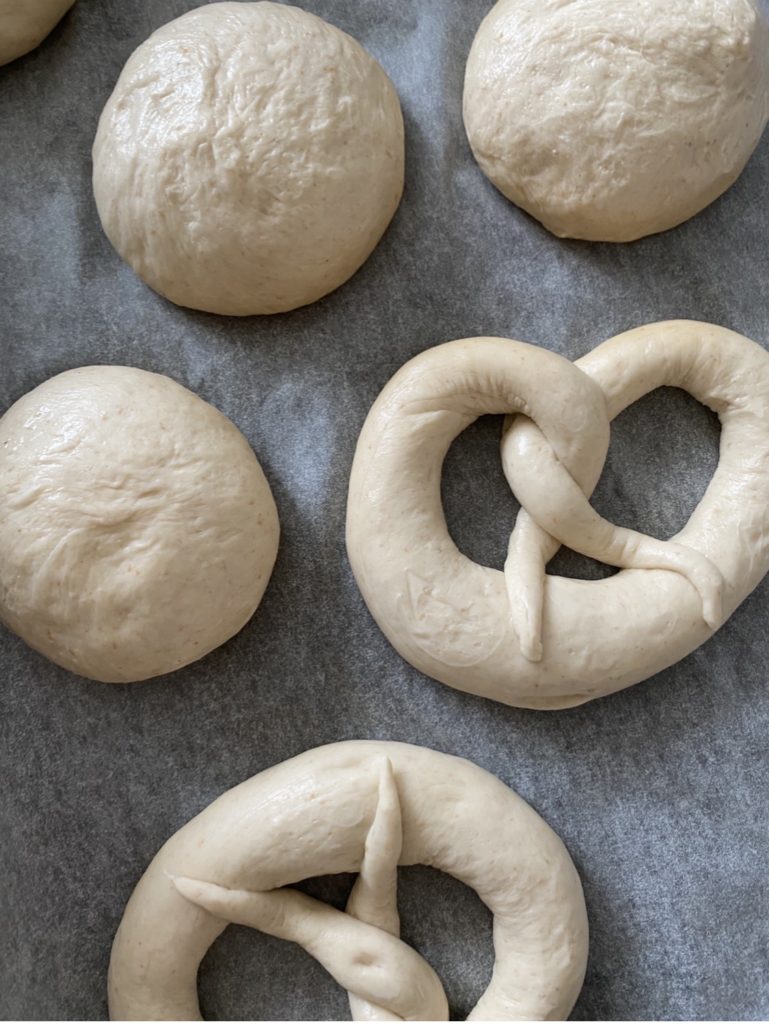
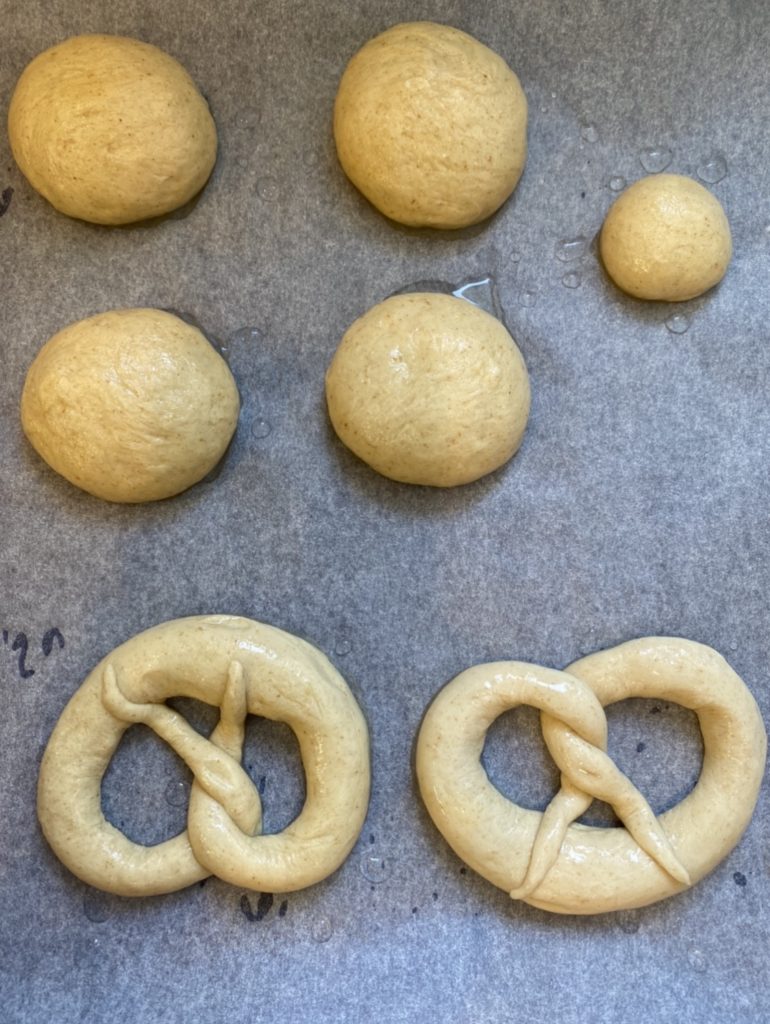
7. Add salt and score.
Add some coarse salt to the top of the dough and score it to your liking. This is a firm dough with a sticky surface. It can be pretty tough to score. The Sonic Lame helps a lot here, but if you don’t own one, you can make your life easier by wetting the blade and scoring with one determined slash.
8. Bake!
Bake to your liking for 10 to 15 minutes at 220C/430F in convection mode. They should have a nice dark brown color in the end.
These pretzels and rolls are best on the baking day, though you can also reheat them nicely on the next day. Or freeze them while still slightly warm to eat later, though this works best when you don’t put the salt on just yet.
The lye rolls go well with a lot of spreads, but my all-time favourite is salami!

